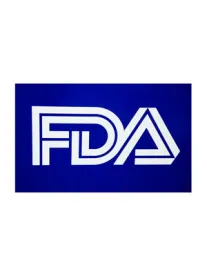On Wednesday, April 14, 2021, the US Food and Drug Administration (FDA) published a long-awaited final guidance document explaining its policy for conducting remote “evaluations” during COVID-19. According to the guidance, FDA will request and conduct voluntary remote evaluations at (1) facilities where drugs and biologics are manufactured, processed, packed, or held; (2) facilities covered under the bioresearch monitoring (BIMO) program; and (3) outsourcing facilities registered under section 503B of the Federal Food, Drug, and Cosmetic Act (FDCA). The evaluations do not replace in-person inspections, and FDA Form 483s will not be issued as a result of the inspection, but the results could be used to support regulatory actions, such as approving a pending product application.
Likely Candidates for Remote Interactive Evaluations
FDA has and continues to prioritize domestic facility inspections and inspections that are “mission-critical,” such as pre-approval inspections to support products that have received breakthrough therapy or regenerative advanced therapy designations, or other products used to treat serious diseases or medical conditions for which there is no appropriate alternative.
FDA uniformly refers to its remote monitoring activities as “remote interactive evaluations,” in contrast to in-person “inspections.” FDA identifies five inspection categories that would be considered for remote interactive evaluations:
-
Pre-Approval and Pre-License Inspections, which are used to evaluate a marketing application and ensure that identified facilities can perform the proposed manufacturing operations in conformance with current good manufacturing practice (CGMP) requirements;
-
Post-Approval Inspections, which assess changes to a drug’s manufacturing operations;
-
Surveillance Inspections, which examine overall operations, including quality controls and CGMP compliance, and are often performed at active manufacturing facilities and 530B outsourcing facilities;
-
Follow-Up and Compliance Inspections, which address specific drug quality problems or facility issues that come to FDA’s attention (g., product safety or quality concerns);
-
BIMO Inspections, which FDA uses to monitor FDA-regulated research conducted under the BIMO program.
If FDA determines that a remote interactive evaluation is appropriate for a particular purpose, it will confirm the relevant party’s willingness and ability to participate in a remote interactive evaluation, including the use of teleconference, livestream video, and screen sharing of data and documents. If the party agrees, FDA will collaborate with the party to plan and coordinate the activities for a remote interactive evaluation. FDA warns that if the party does not agree, it could delay the regulatory process.
What to Expect During a Remote Interactive Evaluation
To complete its remote evaluation, FDA may:
-
Request and review documents, records, and other information (g., electronic systems) ahead of, and during, the evaluation.
-
Use livestream and/or pre-recorded video to examine facilities, operations, data and other information.
-
Schedule interviews and meetings to address any questions or concerns.
-
Evaluate a facility’s corrective actions, often in response to a previous inspection or evaluation.
-
Provide verbal updates to the facility on observations and outstanding issues.
Upon completion of a remote evaluation, FDA will conduct a closeout meeting with the facility’s management and present a list of written observations. The observations, however, will not be issued on a Form FDA 483 and will not be considered inspectional observations. The agency does request, however, that facilities respond to the observations within 15 business days.
Going Forward
As currently drafted, the guidance document will only remain in effect for the duration of the COVID-19 public health emergency (PHE), as determined by the Secretary of Health and Human Services. Thus, post-pandemic implications are unclear; however, this new willingness to embrace technology-enabled tools to trim the FDA’s mounting backlog may transform FDA’s inspection approach for years to come.
In March, the Government Accountability Office (GAO) urged the FDA to reassess its inspection strategy to address its growing backlog. In 2020, FDA racked up a backlog of over 1,000 inspections. Over the past decade and long before the COVID-19 PHE, FDA has struggled to streamline its inspection strategy to accommodate the increasingly global pharmaceutical supply chain. The PHE and the accompanying safety concerns and travel restrictions have compounded this problem. During the PHE, FDA’s in-person inspections largely came to a halt, while other countries instead embraced other tools to conduct inspections with reliance on cameras, mobile Wi-Fi hotspots, web conferencing, and confidential document-sharing tools.
Despite the inspection backlog, it is unlikely that in-person inspections will ever be fully abandoned because they enable unannounced inspections, provide a more holistic picture of facility cleanliness, and allow for real-time reaction and analysis.




 />i
/>i

